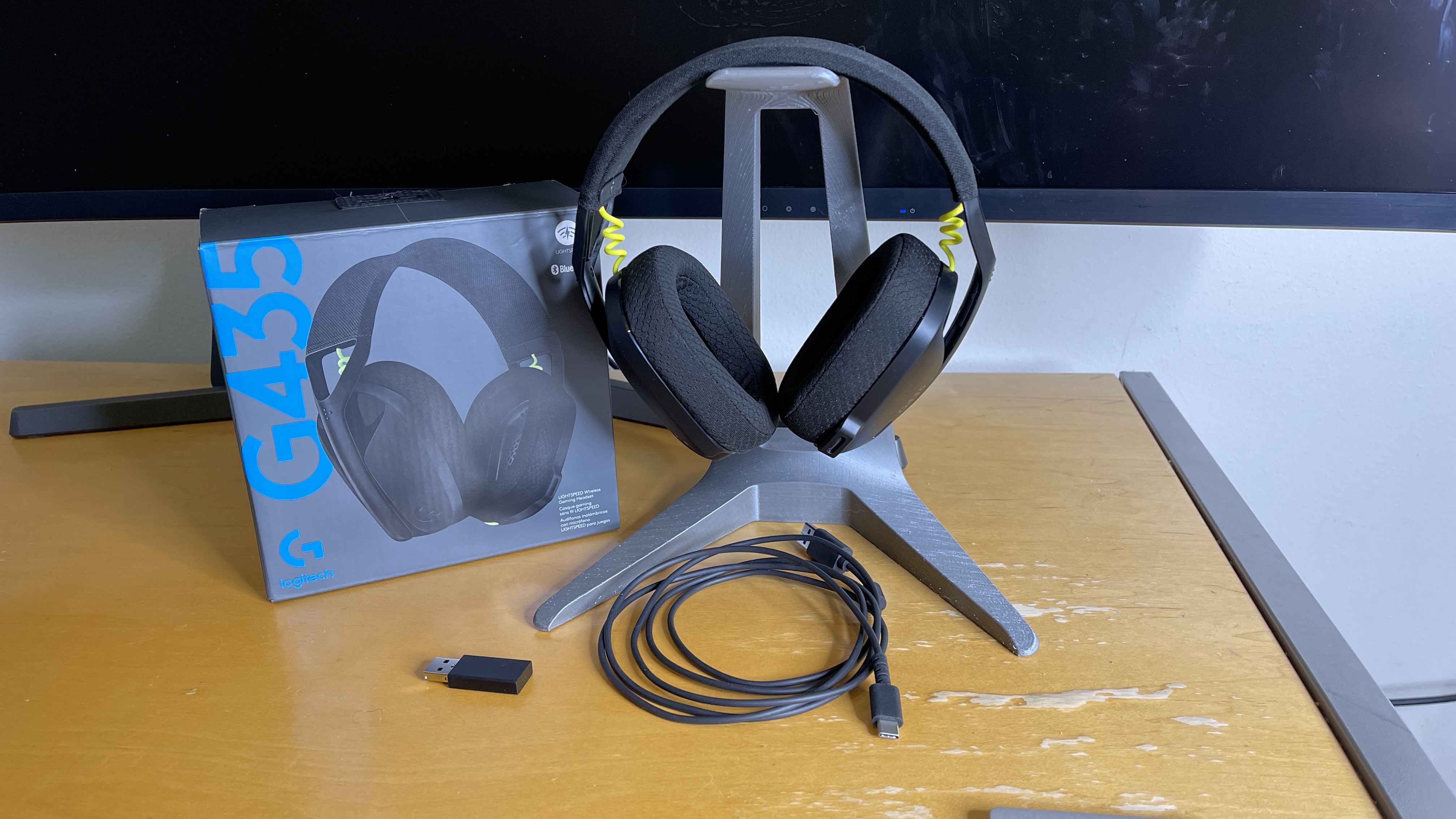Tom's Hardware Verdict
The Logitech G435 gives you lightweight wireless flexibility at a price more in line with wired gaming headsets, but its audio quality is just okay.
Pros
- +
+ Lightweight
- +
+ Comfortable
- +
+ Very low latency, even on Bluetooth
- +
+ Inexpensive
Cons
- -
Microphone picks up significant background noise
- -
Small size may not fit large heads
- -
No wired option
- -
No software for control or surround sound
- -
Poor sound isolation
Why you can trust Tom's Hardware
When buying on a budget, you have to decide which features you’re willing to cut to keep prices in line. Logitech’s G435 Lightspeed Wireless Gaming Headset is like a solid economy sportscar: It’s reasonably quick, with a low-latency connection. It’s also lightweight and energy efficient, and it looks pretty nice for a low-priced headset.
These $79.99 cans don’t have much in the way of options, but they’re stylish, amazingly comfortable, they work wirelessly with a wide range of devices, and they sound about as good as you’d expect at that price. Read on to see if they're worthy of a spot on our best gaming headsets list.
G435 Lightspeed Wireless Gaming Headset Specs
| Driver Type | 40mm |
| Impedance | 45 Ohms |
| Frequency Response | 20 - 20,000 Hz |
| Microphone Type | Dual-beamforming on-cup; 100Hz - 8,000 Hz frequency response |
| Connectivity Options | Lightspeed wireless (2.4 GHz USB Type-A dongle), Bluetooth |
| Cables | USB Type-C to Type-A charging cable (6 feet/ 1.8 m) |
| Weight | 0.36 pounds /165 g |
| Lighting | None |
| Software | None |
Design and Comfort


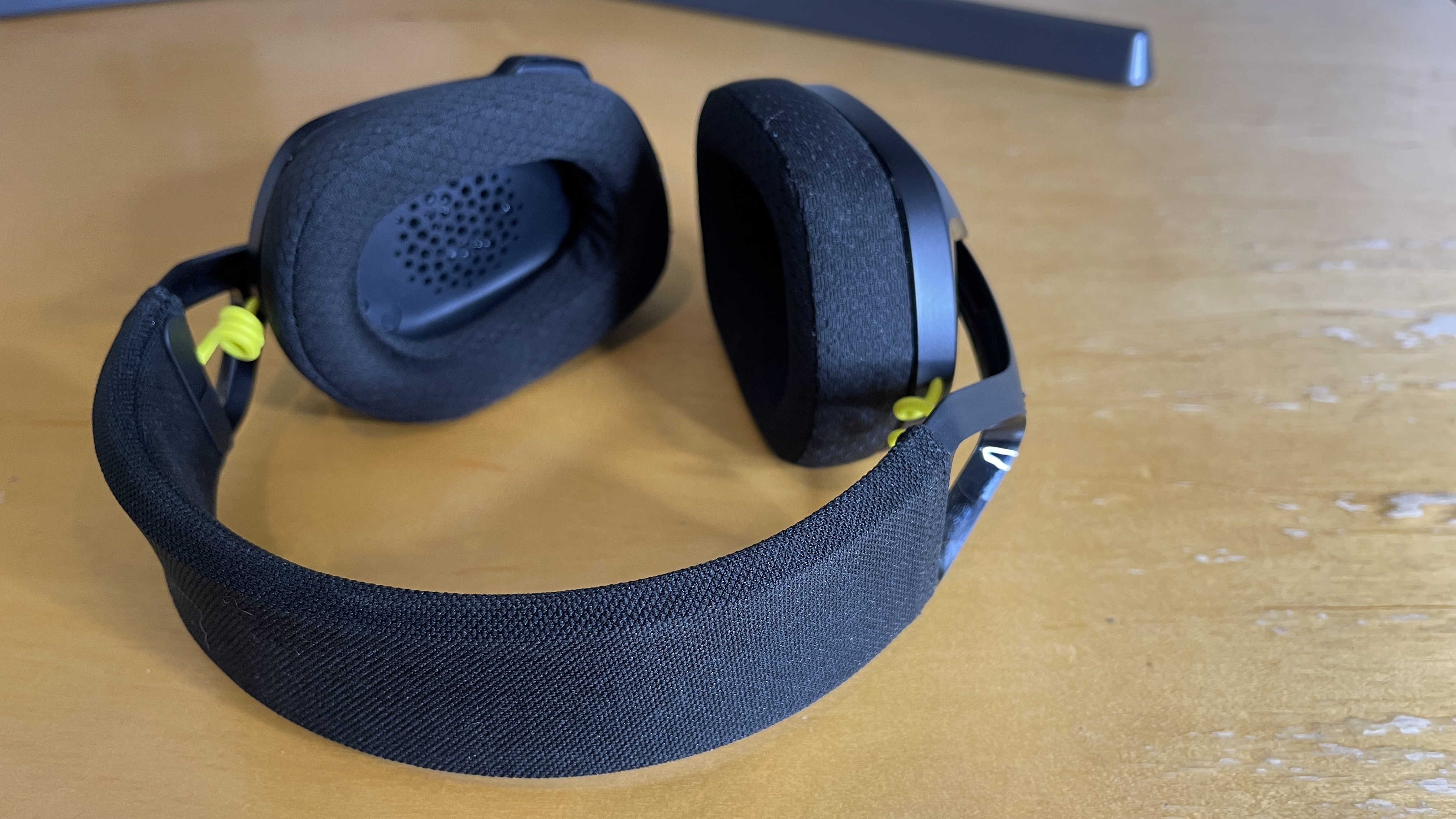
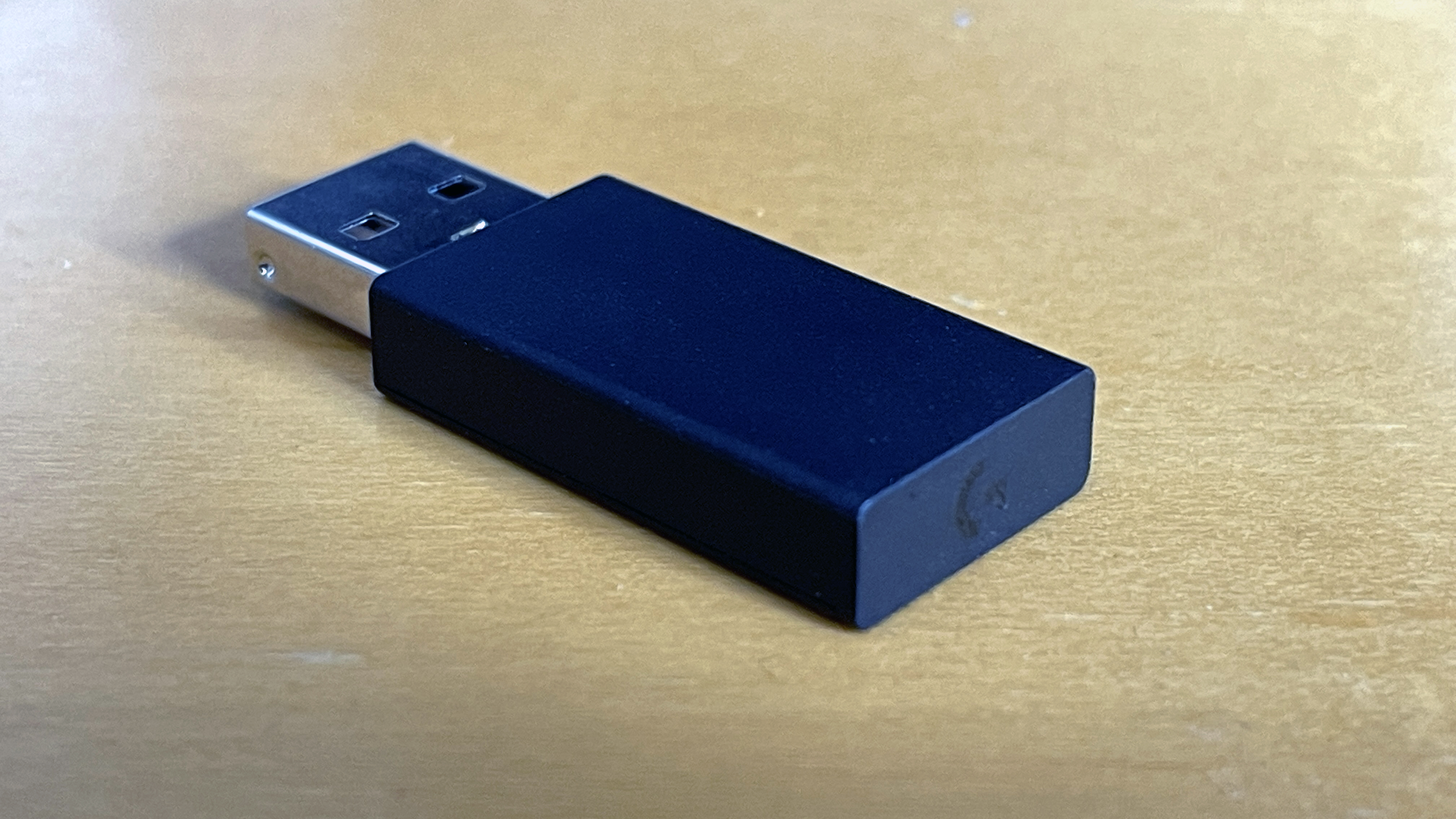
The G435 is shockingly lightweight. We’re typically impressed when a gaming headset weighs as little as 0.6 pounds; this one weighs in at just 0.36 pounds. Given its weight and low price, it’s not surprising that the construction is lightweight plastic, with no metal in sight. Logitech says it’s certified carbon-neutral, and has at least 22% recycled plastic content, so you might take solace in knowing your purchase isn’t making the world a worse place.
My test unit was a subdued matte black with neon yellow accents on the wiring and buttons. But if you’re looking for a brighter look, off-white/lilac and blue/raspberry combos are available as well. You’ll have to rely on color for flash: There’s no RGB here. The overall design is attractive, with curves and angles on the earcups that look much more stylish than earlier Logitech options like the G733.
The earcups have a bit of left-and-right and up-and-down give, so they rest comfortably around your ears. Logitech says the G435 is optimized for smaller head sizes, but I have a rather large head (I use the last two notches on an adjustable cap) and I found the G435 fit my head well with the headband fully extended. With the feather weight and soft, fabric-covered memory foam earcups that are well-padded and never feel hot, these are among the most comfortable cans I’ve worn. I wouldn’t hesitate to use them all day, which was surprising given that the headband lacks padding and has just a thin layer of fabric over the plastic. But the G435 is so light, none of that made it uncomfortable.
Controls are simple, with the left earcup packing a power button, a volume rocker, and a button that either switches between Lightspeed and Bluetooth or mutes the microphone, depending on how long you press it. A beep lets you know when you’ve maxed out the volume; other tones confirm power-on and -off. At the bottom of the cup is the USB-C port, which only allows charging and can’t be used to facilitate a wired connection. There’s also no analog input for a 3.5mm cable—audio is Lightspeed and Bluetooth only, with no wired fallback to use when the battery is dead or a device is incompatible.
There’s also no microphone boom. The dual beamforming mics are built into the front of the left earcup.
Get Tom's Hardware's best news and in-depth reviews, straight to your inbox.
The USB-A dongle is color-coordinated with the headset and protrudes about an inch-and-a-half from the port. Its width is small enough to avoid blocking adjacent ports.
Battery Life
Logitech rates the G935 at 18 hours of battery life, and my experience with the G935 bears that out. Using the headphones over the course of a few days for gaming via the Lightspeed dongle on a PC and PS5, and for music and phone calls on an iPhone 12 Pro Max via Bluetooth, the headset lasted for just over 18.5 hours before it shut off.
Audio Performance
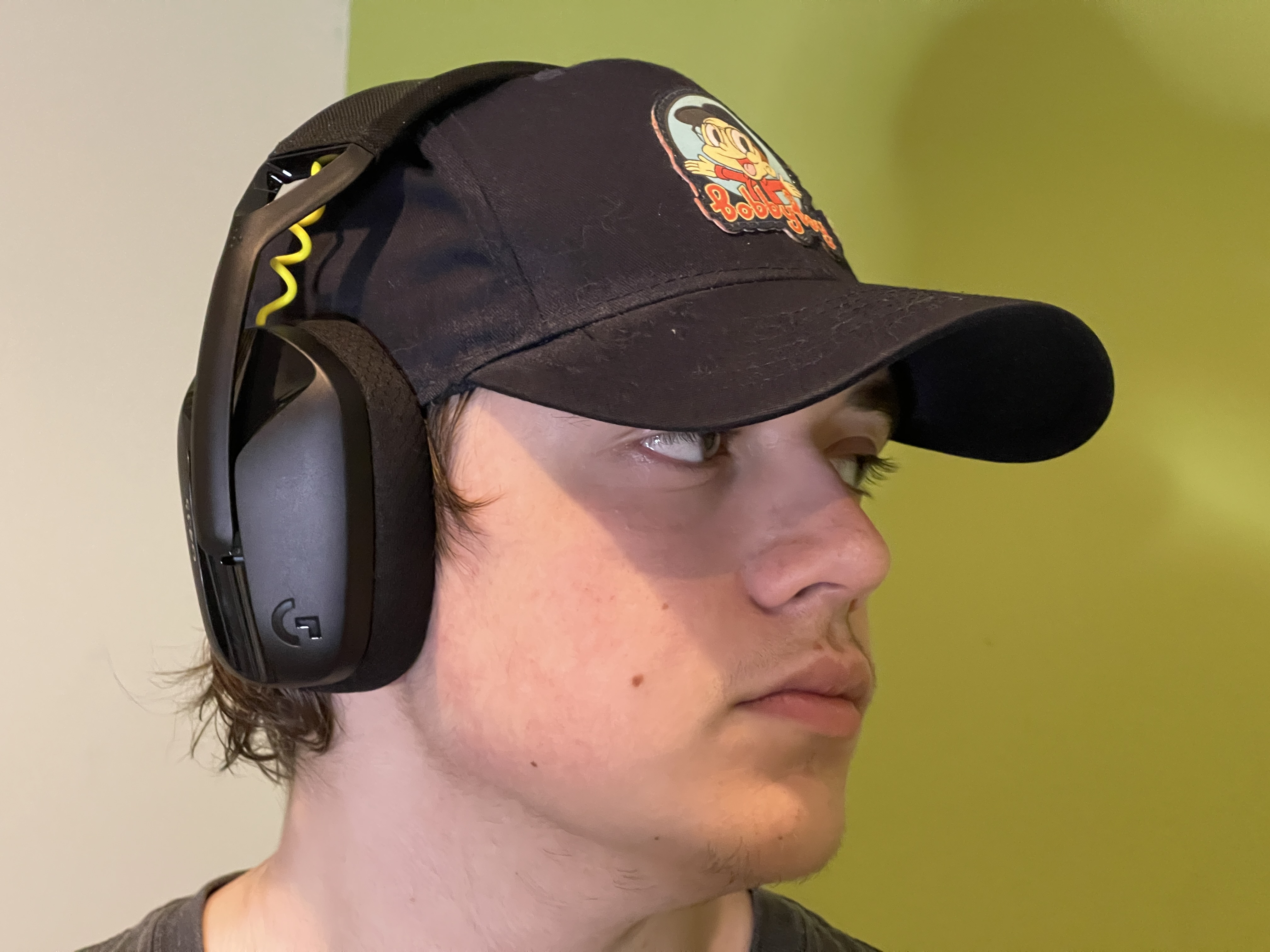
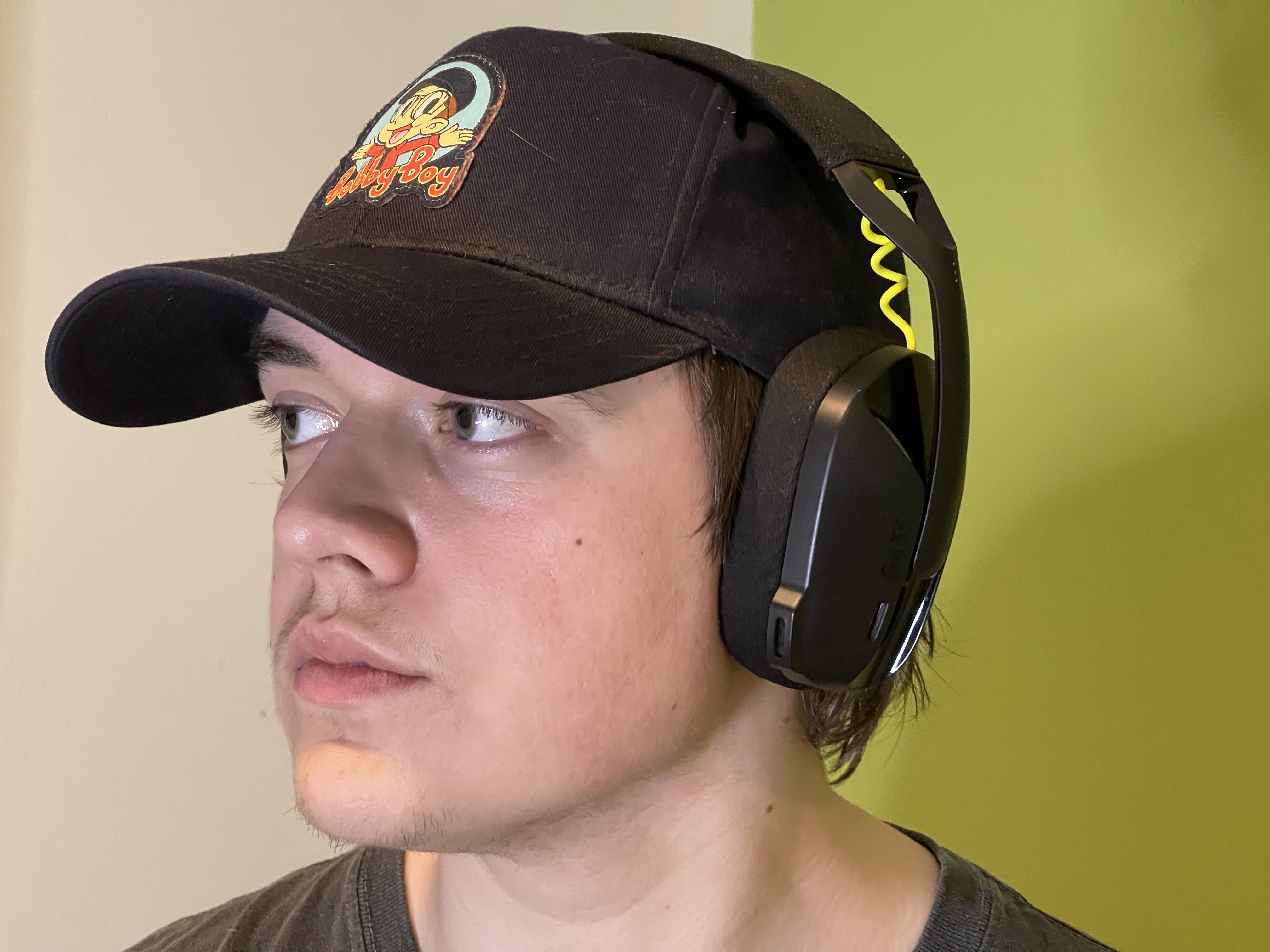
Logitech’s 40mm drivers pump out a respectable volume level, but the clarity is pedestrian, and the overall sound quality is just okay. That’s not to say the audio is bad, it’s just unexceptional. You’ll hear important game audio elements just fine, and music sounds good tonally, but the bass from explosions and gunfire is underwhelming, and you’re not going to hear any new details in your favorite tunes. Playing Deathloop and Microsoft Flight Simulator, dialog, sound effects, and environmental audio were all clear. Listening to Baby Keem’s The Melodic Blue album, the music and vocals sounded good, but bass was lacking. A FLAC rip of my Pink Floyd Dark Side of the Moon CD sounded good, but I couldn’t make out the little details in the background that my audiophile-oriented Sennheiser Momentum 3 headset revealed.
Because the G435 lacks any bundled software, any audio adjustments such as equalization or bass boost will need to come from your system's software or audio playback tools.
The airy, fabric-covered earcups are comfortable and keep your ears from getting hot, but they do a lousy job of sound isolation. Unless you have the audio cranked, you’ll hear environmental sounds, and if you do have it cranked, others nearby will hear what you’re listening to. With my son wearing the headset and sitting six feet away, I could clearly make out the lyrics to Kanye’s Hurricane as he listened.
While the audio was just okay, the lack of any perceptible latency was impressive, as was the solid connection using both the Logitech Lightspeed dongle and Bluetooth. Game audio and lip-sync in videos exhibited no delays, which is expected with a dedicated wireless audio dongle but is often more of a challenge with Bluetooth. Watching Ted Lasso via my TV’s Bluetooth connection, audio was fully in-sync, and the connection remained solid when I wandered about 20 feet into the kitchen.
The headset doesn’t include any built-in 3D features or software, but Logitech touts compatibility with Dolby Atmos, Windows Sonic, and the PlayStation 5’s Tempest 3D AudioTech. While that’s true, the PC surround technologies will work on any headset, so it’s a bit like advertising that a car supports highways. Testing Atmos and Tempest 3D, the audio feels more enveloping than pure stereo, but when playing Warzone I didn’t get the kind of enhanced positional information about enemy movements and fire that I found with headsets that have specific gaming-oriented 3D enhancements like the Creative SXFI Air Gamer and the Fnatic React+. The 3D effect is pleasing, but not necessarily informational.
Microphone
The Logitech G435's microphone did a good job of picking up my voice clearly in both online gaming and Bluetooth phone calls. The voice clarity wasn’t quite as good as with boom microphones on the Creative SXFI Air Gamer or the Razer Barracuda X, but nobody had any issues understanding me.
Logitech says that dual beamforming mics reduce background noise, and the key word there is “reduce,” rather than eliminate. My voice was indeed louder than the background noises, but the external noises were still very much there. Game audio, people talking in the next room, and the clack of my typing were all very noticeable in both game sessions and voice recordings.
This also carried over to Bluetooth communications. With the volume turned up high on a call, the microphone picked up the caller’s voice for the earcup, due to the poor sound isolation, and the caller reported hearing an echo. I had to turn the volume to the lowest level where I could still clearly hear the caller before they reported the echo was gone.
If you’re going to be using the G435 in a really quiet environment, this might not be a big issue, but the microphone makes it a poor option if there’s any kind of background noise.
Bottom Line
The Logitech G435 looks nice and is really comfortable, and the dual wireless capability lets you easily use the same cans with your computer and phone (although not at the same time like with Corsair's Virtuoso RGB Wireless XT) . The sound isn’t going to blow anyone away, but it’s as good as you’d expect from a $79 set of cans that might be even cheaper if there's a sale or a relevant Logitech G promo code.
On the downside, the mediocre sound isolation means these aren’t going to be a great option for listening in a noisy environment, or for isolating others from your audio in a quiet one. And while the microphone captures your voice clearly, it also captures far more background noise than similar headsets that sport boom mics.
For $20 more you could have the Razer Barracuda X, which offers similar flexibility across devices and a better microphone, but lacks Bluetooth connectivity. Creative’s SXFI Air Gamer offers both low-latency gaming across devices and Bluetooth, but costs almost twice as much as the G435 and uses a cable to connect to PCs and PlayStations.
Logitech's G435 has a unique mix of light weight, low cost, and wireless flexibility to work across a variety of devices. If those are the most important features for you, the G435 is well worth your consideration. But there are better options if you're willing to spend a bit more.
